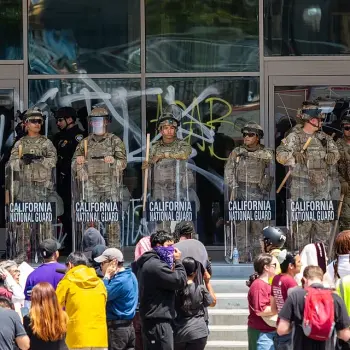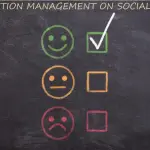The divorce rate has dropped dramatically since its high point in the 1980s and, particularly, since the “Great Recession” of 2008. But so has the marriage rate of the middle class.
In 1980, there were 22.6 divorces for every 1,000 marriages. That number has been in a gradual decline, but after 2008, when there were 18.7 divorces per thousand, the rate has dropped rapidly, as of 2008, to 15.1.
Now divorce rates and statistics are notoriously problematic and difficult to define, for reasons explained in this article. The above numbers are for a single year, though marriages typically last for a number of years. Statistically, the possibility of divorce for any given marriage grows with the number of years. But other factors are also involved in such calculations, such as the divorced-but-remarried. It used to be said that half of all marriages will end in divorce. That generalization was contested, but it had some validity.
But not anymore. However you run the numbers, the drop-off since 2008 shows a significant decline in divorce. According to W. Bradley Wilcox of the Institute of Family Studies, discussing the findings, “This means the fabled statistic—that one-in-two marriages end in divorce—is no longer true.”
More good news is that the percentage of children being raised by their parents in intact, married families is now 62.6%. This 2019 data is up from 61.8% in 2014, with the number going up each year. (For the whole report, go here.)
In addition to all of these improving numbers still being way too high, the bad news from the Institute of Family Studies is that divorce and single parenting are still high among the poor and working class of all races. But another study has found that the sharpest drop in the marriage rate is taking place among the middle class.
Americans whose income is in the middle three-fifths of the population–that is, those earning from $25,000 to $125,000–have the highest decline in marriage rate of any other demographic. This has been the trend from 1980 to 2018.
People who make below this range–again, the white and black working class–still have the lowest marriage rates. In 2018, the marriage rate for Americans in the lowest one-fifth income group was only 26%. In the middle one-fifth, it was 52%. This is a drop of 16% since 1980. In contrast, the most affluent Americans, those in the top fifth income range, have a marriage rate of 60%. This is a reverse from what it was in 1980, when the middle cohort had a higher marriage rate than the top income group.
What is going on? In an article on these findings in The Wall Street Journal [subscription required], Janet Adamy and Paul Overberg suggest a cultural as well as an economic shift. Young adults used to get married as the beginning of their careers and their adult life. Today young adults see marriage as what they do after they attain success in their careers (if they ever do) and as the pinnacle of their adult life (if they ever attain one). This shift in the way people think about marriage would also explain the phenomenon of delayed marriage, as well as the declining birth rate.
The article quotes sociologist Susan L. Brown: “The meaning of marriage has changed, and marriage is now viewed as this capstone achievement once all of these other milestones have been achieved. . . .It’s almost like a luxury good that’s attainable only by the people who have the highest resources in society.”
The article also says that economic problems play a role in this shift and in the drop in the marriage rates. The article quotes another sociologist, Daniel Schneider: “Economic conditions, even in the good economy, remain difficult for many working Americans. . . .That is not conducive to you feeling like you could get married, or people wanting to marry you.”
But I wonder about this. As Prof. Schneider appears to concede, economic conditions have improved considerably for this middle income range, and yet their marriage rates keep going down. More importantly, the article, as well as the Institute of Family Studies report, show the positive economic benefit of marriage. For example, according to the Wall Street Journal article, among young adults aged 25 to 34–that is, just starting out–married couples have a median wealth of four times that of couples who live together without being married (a growing practice in the middle class).
If marriage is so beneficial economically, one would think that those who are having financial problems would be more willing to marry, not less, as seems to be the case today.
The article cites research showing that among those who are living together but want to get married, over half say they are not financially ready. What do they mean by that? Yes, parenthood is a financial demand, but that’s a separate question, and many cohabiting households already have children. From what I have seen, what holds them back is often the financial resources needed for a wedding. The average cost of a wedding now comes to five figures, with one calculation coming to $25,764 and another coming to $33,391!
You can get a marriage license, for around $50, depending on the state. You can get a Justice of the Peace or your pastor to conduct the wedding for free, though a donation of a $100 or so to the latter is good form. All of your friends and family can be at the church and the bride can walk down the aisle. You can throw a party afterwards at a local pub, with everyone buying their own drinks. You will have wonderful memories. But a wedding does not have to cost as much as a new car.
I know there are other factors. The difficulty of finding the right person to marry. Confused gender roles. The moral breakdown. Anti-marriage ideologies. Internet pornography, throwing off our sexuality. Above all, the isolation and solipsism encouraged by our culture and our technology. (All of which are documented in my new book.)
And we need to recognize that not everyone should get married, that not everyone has this vocation (1 Corinthians 7).
Still, three-quarters of young Americans say they want to get married, a statistic that has remained constant since 1976. They want to, but many of them, for whatever reason, don’t. A healthy culture would change to make it easier for them to do so, rather than to make it more difficult.
Image by RENE RAUSCHENBERGER from Pixabay













